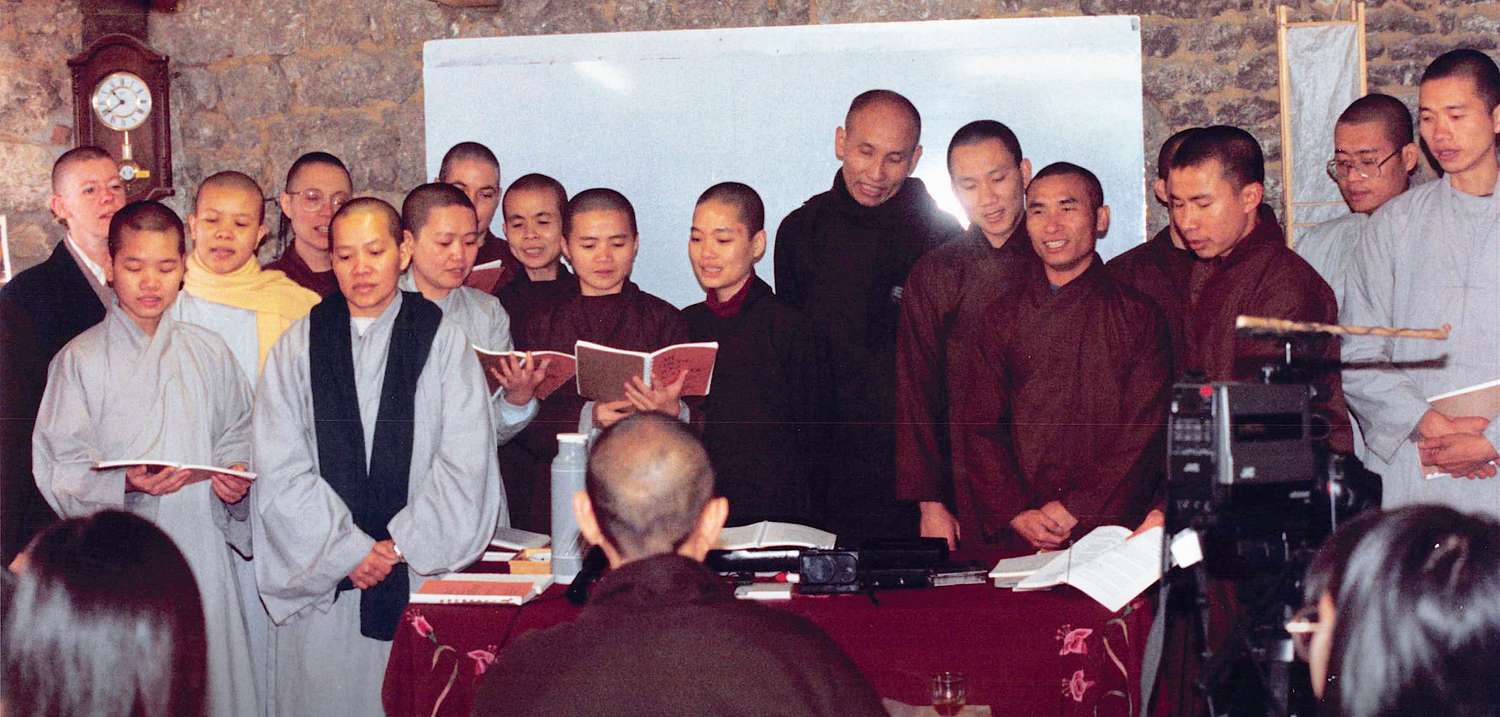Meditation Songs
Sister Chân Quy Nghiêm
I thought that meditation songs were a new Dharma door of Plum Village. But in fact, it is a long-standing Zen tradition that Plum Village has applied creatively and widely so that people now, especially young people, can easily come in touch with the Buddha’s teachings to be more aware of the meaning of their life, and to live in a more wholesome, beautiful, and rich way.
In the Zen tradition, the monks and nuns chant sutras while inviting bells, fish drums, and other Dharma instruments. Now I realize that chanting is a form of meditation song–a way to help us absorb the teachings of the Buddha. The words of the sutras are like drops of nectar that fall gently on the soil of the mind, germinating the good seeds, watering them so they may grow, bear fruit, and bring beauty to our lives.
When I first came to Plum Village, France, in the Summer of 1987, I heard a recording of the song “Your consciousness is like the sun shining” by the singer Ha Than (a well known Vietnamese singer of meditation songs). I was deeply moved, as if I had been asleep and had just woken up. The Buddha said we suffer because we do not see the path. There are tens of thousands of paths in life. If we are not fortunate enough to meet the Buddha to show us the way, we could easily be lost.
So each meditation song is like a sutra, a finger of the Buddha showing us the way to peace. “Fortunately, there is a compassionate hand everywhere in the world, reaching out to help you.” If we do not practice for our consciousness to shine like the sun, it is hard for us to see the Buddha’s guiding finger, and to be determined to follow in his footsteps and cross to the shore of freedom.
The words and music of a meditation song must be gentle and well blended, like the mind of the Buddha. It must be able to wake us up so that we are no longer in a slumber, no longer writhing in suffering. I love to sing the song “Breathing in, Breathing out” in many languages as a way to remind myself to wake up, to come back and take care of my body and mind before doing or saying anything. This way, I can avoid making mistakes that bring suffering to myself and to others.

I practice to consciously breathe in and out along with the song, like how Thay taught us, to calm the body and mind, to be fresh like a flower, solid as a mountain, still like a serene lake, and vast as the sky so nothing can disturb me. The one who sings and the one who listens must truly be what they are singing and listening to, so that the good seeds in them can be watered, grow strong, and offer flowers and sweet fruit for themselves and others.
Therefore, the one who sings meditation songs and the one who listens are very important. If the singer and the listener are not practicing, it is hard to convey and receive the meaning of the meditation song; all its effects would be lost, no matter how melodic the music or how elegant the words. Likewise, no matter how practical or beneficial the teachings of the Buddha, or how supremely awakened the Buddha is, if there is not a solid sangha that is practicing sincerely, it would be hard to come in touch with the authentic teachings and with the Buddha. That is why the King Pasenadi said to the Buddha, “When I look into your sangha and see the solidity and peace of each of your disciples, my faith in you grows.”
I believe that each meditation song, in its true sense, should carry the Buddha, the Dharma, and the Sangha. If the one who sings has a solid practice and a voice and comportment that are rich with the flavor of Zen, then perhaps only one song is enough to inspire the listeners to practice. The listeners would wish to sing that meditation song in their daily life in order to transform their suffering, rediscover the joy of living, and have greater trust in themselves and in life.